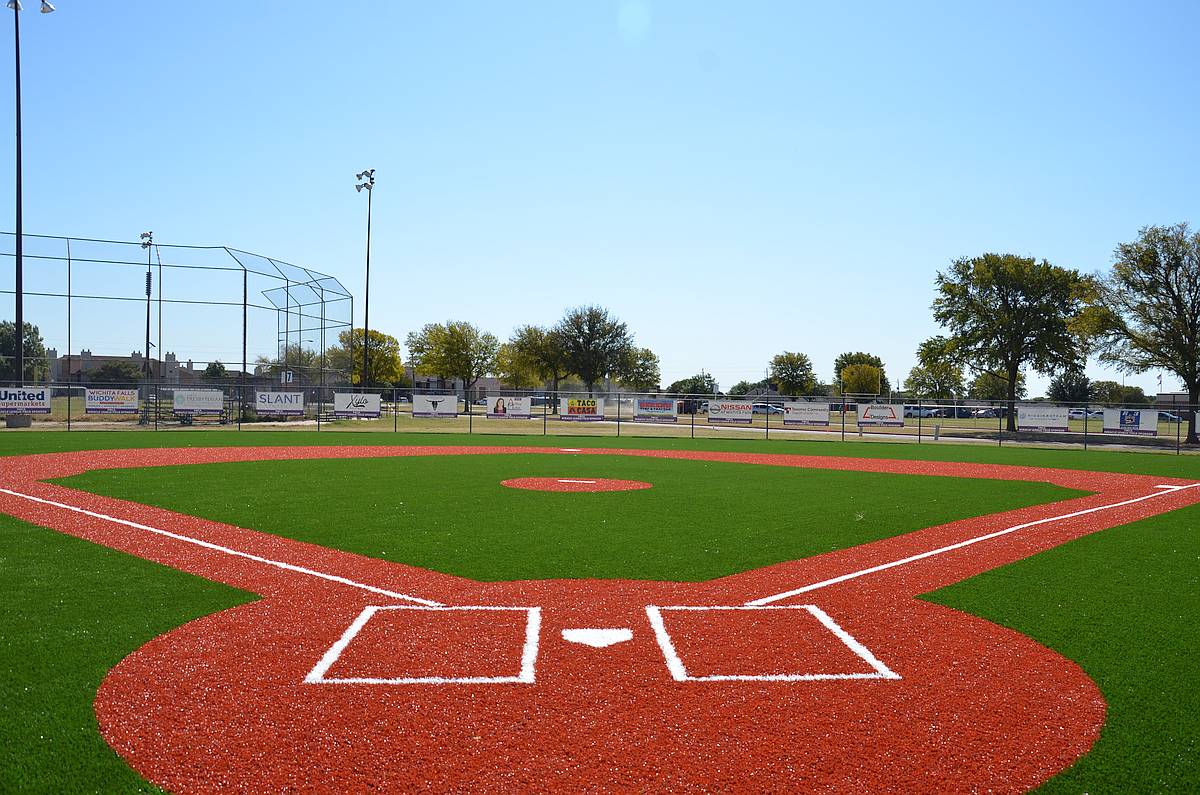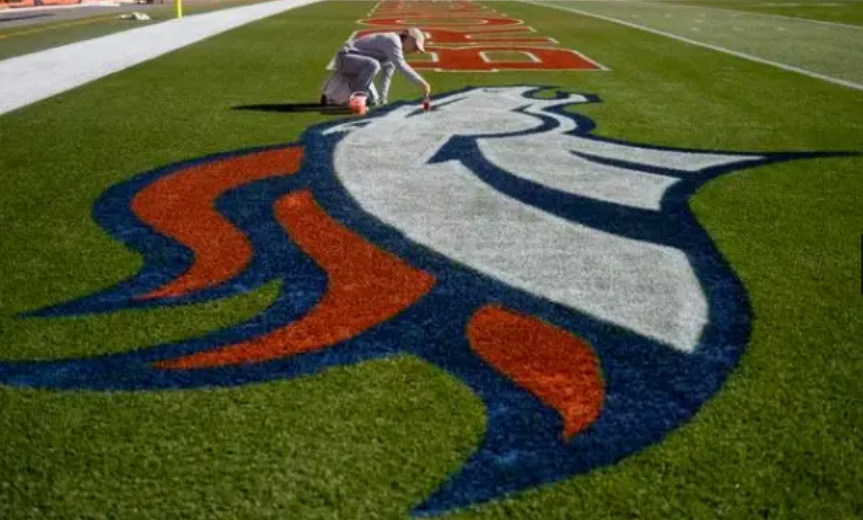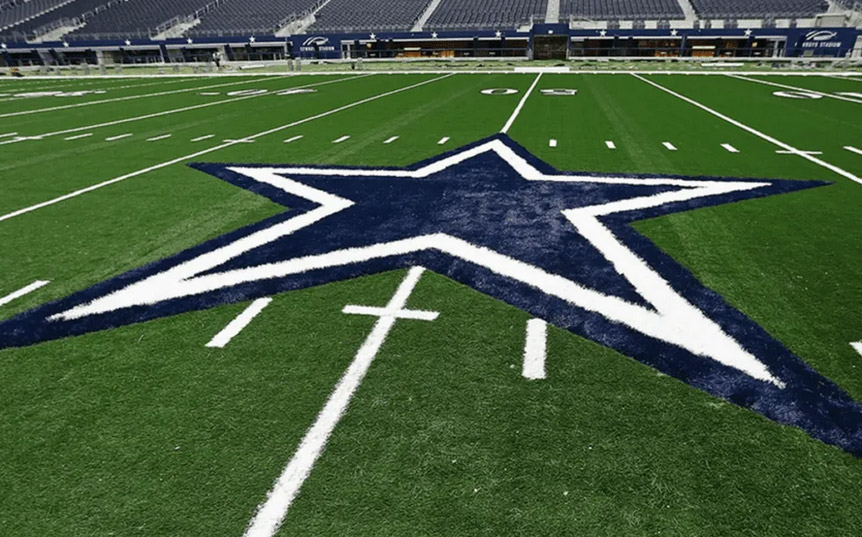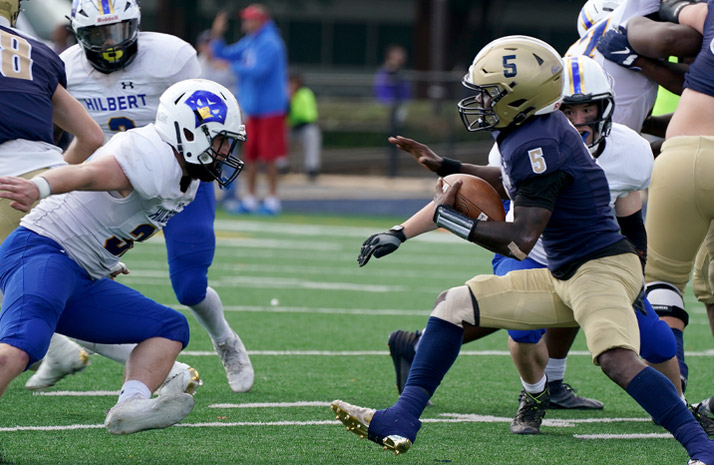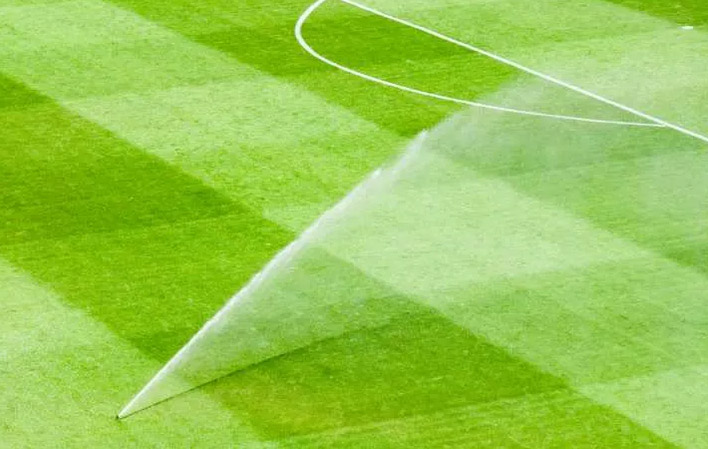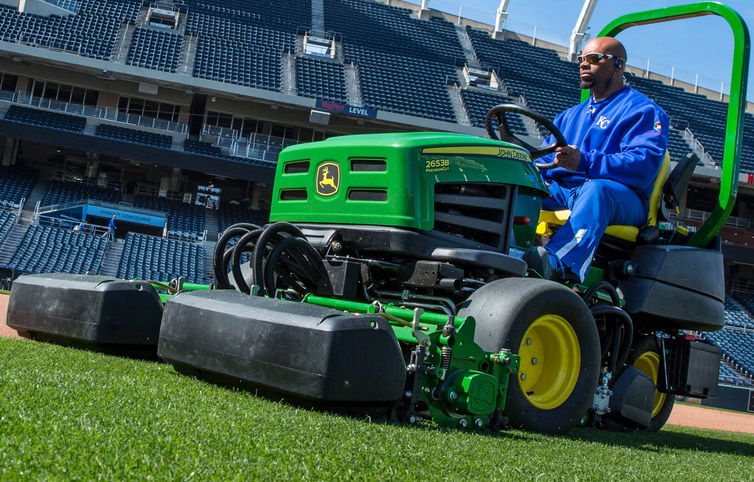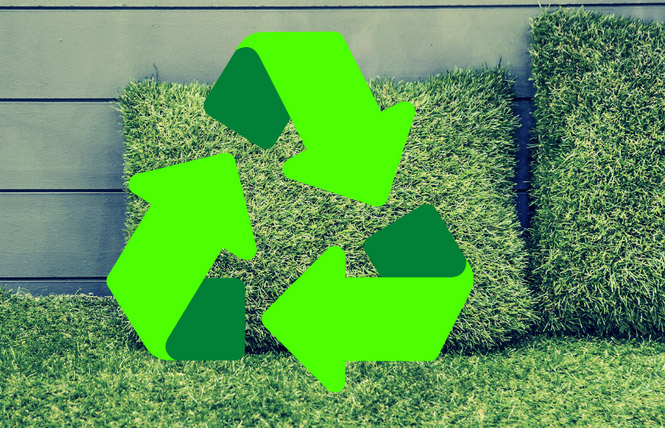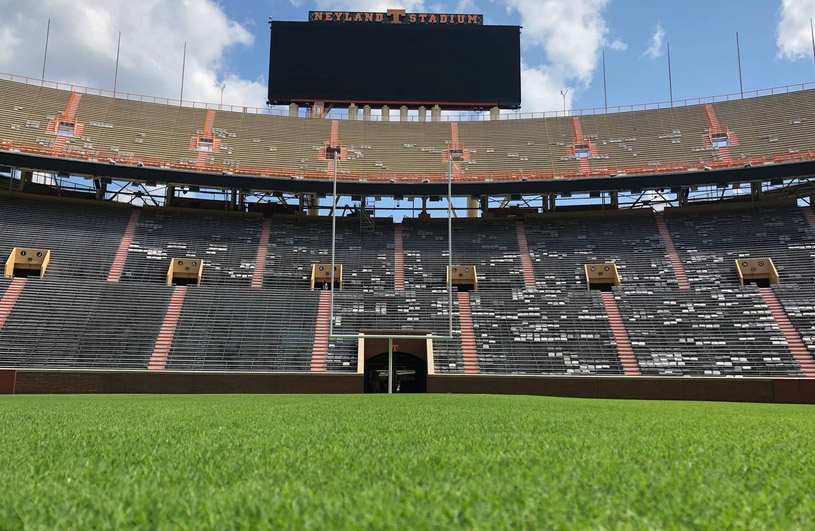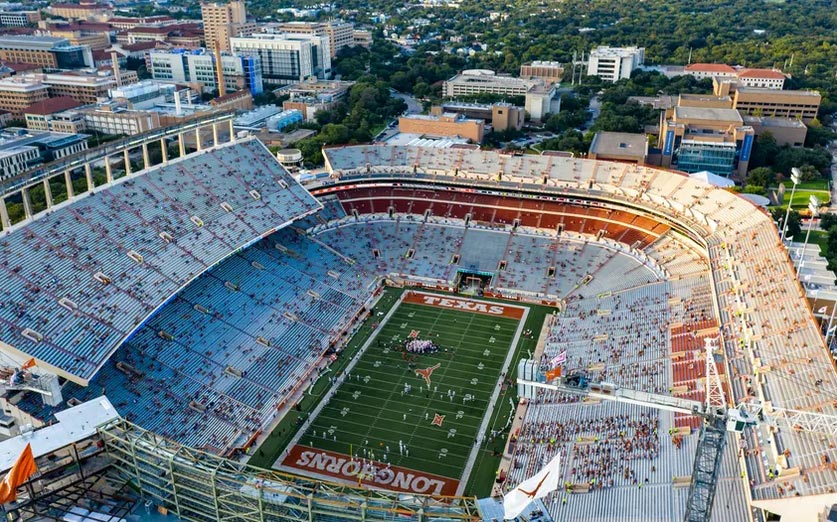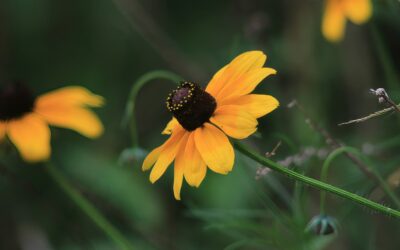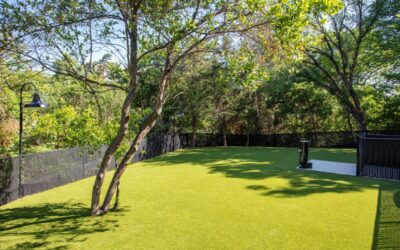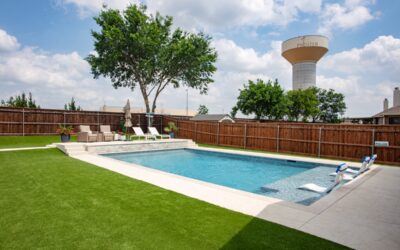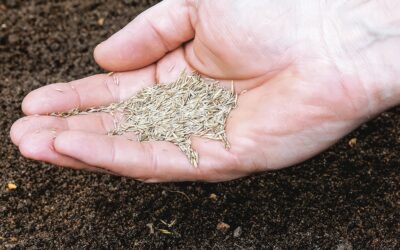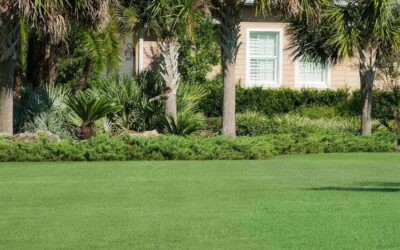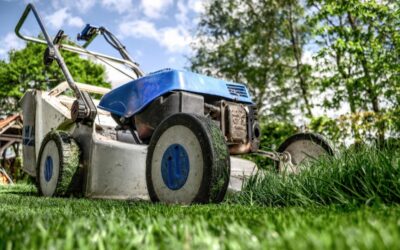Ever been tricked into thinking a patch of artificial turf was natural grass?
As manufacturing technology improves and artificial grass more closely resembles the look and feel of the real thing, that’s becoming more common.
But important differences remain. Stadium owners, business owners, and homeowners across the U.S. should weigh up these differences before deciding whether to switch to turf from real grass.
Many of the same pros and cons of artificial grass and natural grass apply equally to backyard lawns as NFL stadiums. However, backyard lawn decisions affect families but sports stadium decisions affect players, fans, and facility managers.
So, let’s consider the differences between the two surfaces—with the main focus on comparing grass and turf for sports fields. High-profile discussions are ongoing about which surface is best for playing on.
Sports Turf Vs Grass: Main Differences
The look, feel and performance of a ground surface are important factors—but not the only ones when considering whether to lay grass or turf for a backyard or sports field. Economic, environmental, and other factors must be taken into account.
For sports fields, these factors become even more critical because the stakes are higher.
It’s easiest if we break down the main considerations when choosing between turf and grass for sports fields and briefly consider each one.
Appearance
This used to be no contest—well-tended grass fields looked better than turf fields in the days when AstroTurf was the only option.
Winter could be hard on grass fields and sometimes wear and tear damaged the surface but teams of groundsmen did their best to keep grass fields looking the part all year round.
The early days of artificial turf produced fields that were low maintenance and consistent, largely unaffected by bad weather—but they didn’t look (or play) much like real grass.
Since then, everything has changed. Turf manufacturing technology has advanced by leaps and bounds. Turf fields are now so realistic, it’s difficult to tell the difference between the two.
This is Empower Field at Mile High, home of the Denver Broncos—a grass field:
This is the AT&T Stadium, home of the Dallas Cowboys—a turf field:
Can you tell the difference? Both look verdant and inviting…
So, nowadays, not only does turf provide low-maintenance, consistent sports fields that can be used all year round. They also look verdant just like well-manicured real grass fields—without the considerable efforts of maintaining the right length, thickness, and color.
Yet some teams still prefer the natural shades of green and the seasonal changes of natural grass fields.
For more information on the appearance of turf, check out this post on the most realistic artificial grass types.
Playability
The playability of turf and grass fields varies. Generally, with high-quality artificial turf sports fields, you can expect:
- Consistency of bounce (especially important in soccer, tennis, etc.)
- A flat and predictable surface with uniform footing (less risk of tripping)
- Good weather resistance: turf is usually playable even during and after heavy rain or in icy conditions
- Consistent turf blade length all year round with no maintenance required
- Fewer postponements and cancellations of events
- A hotter surface when the temperatures rise
High-quality natural grass sports fields provide the following:
- A less consistent surface in terms of bounce and evenness
- A more natural feel for the overall playing experience
- Variable playing surface blade lengths during the year
- A cooler surface even in the hottest months
- Possible use for FIFA events, where grass is mandatory (no turf)
Durability
Artificial grass in backyards is known for its excellent durability—and it can last up to 20 years or more.
In sports field environments, the added wear and tear of players sliding, tackling, and touching down and the constant battering from balls and boots reduces the longevity but turf still stands up well compared to real grass. Typically, sports field turf lasts 5-8 years even in NFL stadiums.
Keystone Construction says this about the longevity of turf:
“Artificial turf fields can endure more than 500 event hours before needing any type of repair, whereas a grass field can only withstand 100 hours.”
This is partly what makes turf such a cost-effective option (see below section on costs). It also remains usable all year with minimal downtime.
Many professional sports stadiums are also used for concerts and other major events besides games—artificial turf is well-suited for this, whereas natural grass can suffer from extra wear and tear.
Even grass fields that use Bermuda or Kentucky bluegrass, which are more resilient than most grass strains, can cut up and show severe signs of wear and tear from sports games and other events. Grass fields usually need regular reseeding, resodding, and significant maintenance to help them last every season.
If artificial grass does tear, it can usually be replaced fairly easily by qualified professionals.
Costs
Sports fields are usually very sizable areas that affect many people. Cost is always a major consideration.
The installation of turf is more expensive than artificial grass but, overall, the cost of artificial grass compares very favorably with the cost of grass over its lifespan.
Natural grass requires some ground preparation for leveling and irrigation before seeding or sodding but the bulk of the costs come afterward in constant maintenance, watering, cutting, fertilizing, aerating, and so on. The labor and resource costs involved in this process are extensive.
With synthetic turf, the reverse applies: the installation costs are high because not only a high-quality turf product is needed but extensive ground preparation is required to create a safe, even surface with good drainage. Post-installation, you also need to add a high-quality infill. This all requires professional turf installation know-how and the proper equipment, which adds to the costs.
However, once in place, the ongoing maintenance costs of artificial turf are minimal compared to real grass. This can add up to significant savings with turf vs grass.
According to this turf field cost estimate, a fully installed artificial turf field “costs between $700,000 and $1,500,000 depending on the size, the sport played on it, the quality of the artificial turf, the choice of infill material and the geographical location in which the field is to be installed or resurfaced.”
By comparison, a real grass field will cost approximately half of the turf field to install.
Maintenance
It’s no secret that the maintenance requirements (and costs) are significantly more for grass than turf. Artificial turf requires little more than routine debris removal, occasional cleaning, cross-brushing, infill top-ups, and occasional repairs of rips or tears.
Compare this with the maintenance requirements of real grass:
- Regular mowing to keep the grass at an optimal height
- Significant watering to ensure consistent and healthy growth
- Periodic fertilization to maintain healthy growth and appearance
- Regular weeding and pest control to maintain field quality and appearance
- Periodic aeration and overseeding for natural grass field health
- Occasional reseeding and resodding to replace the grass entirely
It’s easy to see how the maintenance effort and costs of real grass quickly mount up, usually requiring a large team of professionals to maintain grass sports fields in large stadiums. This counterbalances the lower installation cost of real grass.
Environmental friendliness
Several environmental factors need consideration in the turf vs grass discussion, most notably:
- The use of chemicals/toxins
- The use of fuel
- The use of water
- The biodegradability of products
- The overall carbon footprint
Most discussions on the environmental impact of artificial grass post negative views. However, assertions that “artificial grass ends up in landfill” are overly simplistic and do not consider the real depth of the environmental issues at hand.
On the plus side with turf:
- Because artificial grass needs no water, it’s better for drought areas (and you can save on your water bill)
- No high-quality artificial grass sold today by reputable companies uses PFAs (which have been linked to cancer) or other harmful toxins
- Because turf needs no mowing, it requires no lawnmower fuel
- High-quality artificial grass is fully recyclable
- Much of the infill used in artificial turf installations uses recycled materials (e.g., crumb rubber is made from recycled tires)
- No chemical fertilizers, herbicides or pesticides are needed for turf
This demonstrates that there are two sides to the environmental argument. Even though natural grass captures CO2 from the environment, releases oxygen, and provides a natural drainage system (reducing stormwater runoff) and some artificial grass does undoubtedly end up in landfills, better education is required about the environmental impact of turf vs grass so that home and business owners can make better choices.
If you choose turf, identify and work with a reputable manufacturer for an environmentally friendly solution.
Health and safety
Health and safety is a critical element of the turf vs grass conversation—and the discussion on player injuries on grass and turf is not going away anytime soon.
Whether professional sports or a sports field in a school or public park, slips, trips, and falls are inevitable, so the safety of the playing surface is paramount.
Although artificial grass provides an even, stable, and consistent surface, with good traction and cushioning provided by the infill material, some players and coaches claim more injuries result from turf than grass.
Grass fields are sometimes heavily criticized for the state of the playing surface, especially after busy concerts, heavy rains, or icy conditions.
“The difference between injury rates on bad grass versus artificial turf is relatively low”.
“It’s a misconception to say natural grass is uniformly better than artificial surfaces for preventing injury, or vice versa.”
Besides injuries, other health considerations may be allergies and exposure to toxins. Because no pollen is produced by turf, allergic reactions to artificial grass are very rare—and the lack of exposure to fertilizers, herbicides, and pesticides on turf may also reduce the toxic load for players compared with grass.
On the flip side, turf gets hotter than real grass when the sun shines, which may add to the risk of dehydration. Turf burns are also relatively common.
Pros And Cons of Sports Turf Vs Grass
Professional and amateur sports fields across the country use both turf and grass successfully. There are pros and cons of both but there’s no point in trying to hide it. To us, the benefits of turf greatly outweigh those of grass for sports fields.
That’s reflected in the pros and cons of turf and grass bulleted below:
Artificial Grass Pros
- Highly realistic appearance—closely mirroring real grass
- Green all year round—retains its verdant appeal for spectators
- Very little maintenance required—less work for stadium maintenance teams
- No water required—better for areas that need to conserve water
- Highly durable—can last many years even for pro football (most surfaces are replaced every 5-8 years)
- No divots or potholes—may increase safety
- No mud after heavy rain—also better for safety
- Remains flat, even, and predictable—also better for safety
- Playable all year round in all weather—even in icy conditions
- Always the right height—no need for cutting or growing
- No sunlight required—looks great even in tall stadiums with little sunlight
- Sun-resistant—no drying, discoloration or fading
- Allergy-free—some players can develop allergies to real grass
- Lower costs in the long term—turf pays back the higher installation costs in a few years
- Regular technological advancements—improve the features and safety record with better breeds of turf
- May extend the area’s use beyond sports—e.g., concerts and other events
Artificial Grass Cons
- Gets hotter than real grass—though cooling technology can ease this
- Some concerns over player injuries—especially with slit-film installations
- Higher upfront costs—installation costs for turf are considerably higher than sod
- Not biodegradable—should be recycled rather than put in a landfill after usage
- Lower-quality grass can be slippery—but NFL teams use premium products
- Not entirely maintenance-free—as is sometimes claimed
- Can trap bacteria—if not properly cared for
- Drainage is often more challenging—though professional installations address this
- Reduced flexibility—because the field lines are sewn into the fabric (cannot be easily changed for other sports)
- Some concerns over excess friction and its effect on players
- There may be some concerns over the lack of cushioning effect
Real Grass Pros
- Some players prefer the natural charm of real grass
- Some spectators prefer the appearance and aesthetics
- Some consider real grass better for the environment—as an organic and biodegradable product
- Absorbs carbon and releases oxygen—also considered better for the environment
- Remains cool—even in the hottest months
- Greater flexibility—to repaint the field lines and host different sports
- Lower installation costs—grass is relatively inexpensive to install
- More natural odors compared to artificial turf
- Natural drainage system
- May provide more cushioning than artificial turf
Real Grass Cons
- High maintenance—increases ground care requirements
- Can become too long to play sports—if neglected
- Water and sunlight dependency—otherwise it will not grow healthily
- Higher costs over the long term—due to the ongoing costs of upkeep
- Can get muddy and slippery after rains—worse for player injuries
- The surface can become damaged—especially after adverse weather
- Can get worn down in busy periods—also leading to more slips and falls
- More matches postponed—can be unplayable in wet, icy or snowy conditions
- Exposure to possible allergens—either from the grass itself or the chemicals used on it
- Variable playing surface—with uneven bounces of the ball possible
- Undergoes seasonal changes—and playability may suffer in the winter
Which NFL Fields Use Turf?
Of the 32 teams in total, 17 NFL teams play on turf at 15 stadiums around the country, two use a hybrid playing surface (mixing natural grass and synthetic fibers), and the remaining 13 play on natural grass fields. Read more about this here.
In college football, the use of turf over grass is even more prevalent. Of the 133 schools in the top tier of NCAA Division I, 94 have artificial surface football fields (71 percent) and 39 have grass (29 percent).
Which is better? Turf or Grass?
It depends partly on whether you’re a professional facilities manager, homeowner or other decision-maker weighing up the possibilities of turf and grass.
If you’re looking for an ultra-low-maintenance field that is durable and playable all year and looks realistic without water—and you don’t mind paying a little more upfront to make savings in the future—you’ll likely opt for artificial turf.
If, however, you don’t mind long days of maintenance, shrink from paying higher installation costs, and/or prefer the natural aesthetic of real grass, you may opt for Kentucky Bluegrass or Bermuda instead.Now you know what the main differences are between turf and grass, you can speak with one of our artificial grass professionals to check options for your project.

